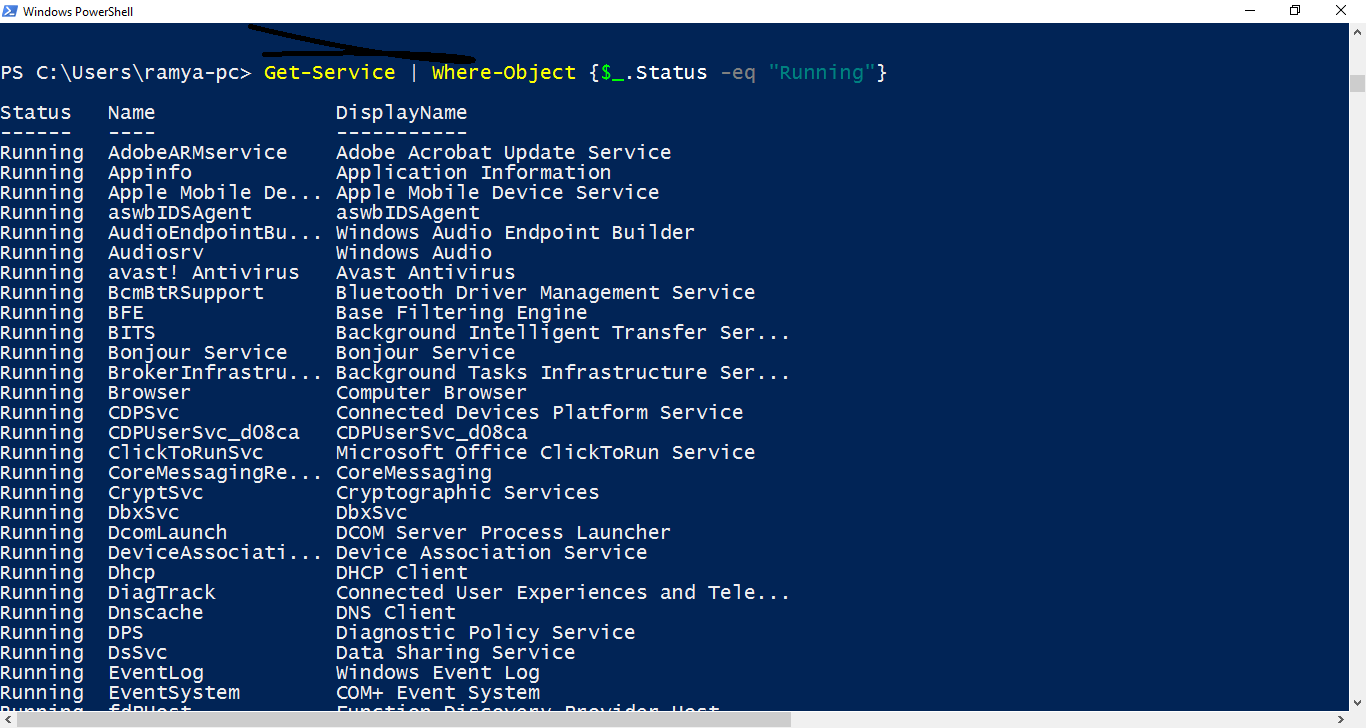

This enables developers to utilize familiar tools for tasks like web development, scripting, and more.įor example, you can use grep to search for patterns in files, sed to perform text transformations, and awk for text processing, all within the Windows command line.

One of the significant advantages of WSL is the ability to use Linux utilities and commands directly within the Windows environment. You can access your Windows files from the Linux terminal, and vice versa, without the need for complex configurations. WSL not only provides a Linux terminal on Windows but also offers seamless integration between the two systems. Launch the Linux distribution and complete the initial setup.

#WINDOWS POWERSHELL INSTALL#
Install a Linux distribution from the Microsoft Store, such as Ubuntu or Fedora. Open PowerShell as Administrator and run the following command to enable WSL feature:ĭism.exe /online /enable-feature /featurename:Microsoft-Windows-Subsystem-Linux /all /norestart.Setting up WSL is a straightforward process: It allows you to run a Linux distribution directly on your Windows machine, opening up a world of possibilities for developers and system administrators. The Windows Subsystem for Linux (WSL) is a remarkable feature that brings the power of Linux to the Windows environment. $systemInfo | Out-File -FilePath "C:\system_info.txt" Windows Subsystem for Linux (WSL) $systemInfo = Get-WmiObject Win32_ComputerSystem To get the processor information, you can use the following command: Let’s explore a simple example of how PowerShell can be used to retrieve system information. PowerShell in Action: Basic Commands and Scripting Task Automation: PowerShell scripts can be used to automate repetitive tasks, making system administration and configuration more efficient. Module Ecosystem: A rich ecosystem of modules extends PowerShell’s functionality, offering pre-built cmdlets to accomplish various tasks. Pipeline: PowerShell’s pipeline feature enables the seamless chaining of commands, where the output of one command can be directly used as input for another. This allows for more intuitive and flexible manipulation of data. Object-Oriented Approach: Unlike traditional command-line interfaces, PowerShell treats everything as an object. With its object-oriented approach, PowerShell allows you to manipulate and manage various system components as objects.

It offers a rich scripting environment that enables automation, configuration management, and system administration tasks. Unlike the traditional Command Prompt, PowerShell goes beyond issuing simple commands. PowerShell is Microsoft’s robust and versatile command-line shell and scripting language. Introduction to PowerShell and its Capabilities These tools not only empower you to accomplish tasks more efficiently but also bridge the gap between Windows and Linux environments seamlessly. In this article, we’ll delve into some of the advanced command line tools and utilities that Windows has to offer, including PowerShell and the Windows Subsystem for Linux (WSL). Windows, being one of the most widely used operating systems, offers a range of powerful command line tools that can greatly enhance your efficiency and capabilities. In the ever-evolving landscape of computing, mastering the command line is a skill that remains invaluable. Windows Advanced Command Line Tools and Utilities PowerShell in Action: Basic Commands and Scripting.Introduction to PowerShell and its Capabilities.Windows Advanced Command Line Tools and Utilities.


 0 kommentar(er)
0 kommentar(er)
